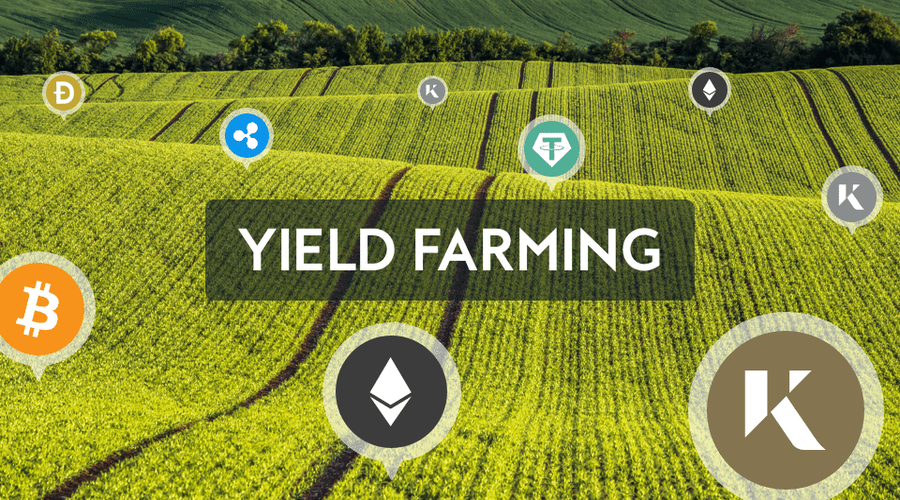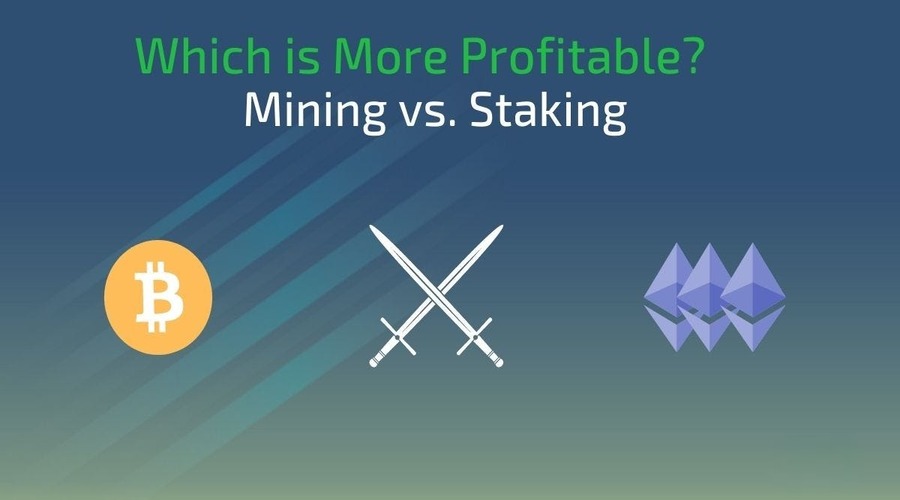Yield farming and decentralized finance (DeFi) lending have revolutionized the way individuals can earn passive income and maximize their returns in the cryptocurrency space. By leveraging the power of blockchain technology, these innovative concepts provide opportunities for investors to generate profits through lending and borrowing digital assets. In this article, we will explore the fundamentals of yield farming and DeFi lending, strategies to maximize returns, risks to be aware of, tips for beginners, and the future outlook of these exciting developments in the crypto world.
Introduction to Yield Farming and DeFi Lending
What is Yield Farming?
Yield farming, also known as liquidity mining, involves providing liquidity to decentralized finance protocols in exchange for rewards. By locking up their cryptocurrencies in smart contracts, users contribute to the liquidity pool, enabling various financial activities such as lending, borrowing, and trading. In return for their participation, users receive tokens or fees generated by the protocol. Yield farming aims to incentivize users to allocate their assets to specific protocols, ensuring liquidity and fostering the growth of the DeFi ecosystem.
What is DeFi Lending?
DeFi lending allows individuals to lend and borrow cryptocurrencies directly from other users without the need for intermediaries such as banks. It utilizes smart contracts to automate the lending process, enabling borrowers to access funds and lenders to earn interest on their holdings. Unlike traditional lending systems, DeFi lending platforms operate on blockchain networks, providing transparency, security, and accessibility to a global user base. By eliminating middlemen, DeFi lending offers greater efficiency and potentially higher returns for both lenders and borrowers.
The Basics of Yield Farming
How Yield Farming Works
Yield farming involves providing liquidity by depositing cryptocurrencies into specific pools or protocols. These pools enable various financial activities, such as lending, borrowing, or decentralized trading. In return for contributing to the liquidity pool, users receive rewards in the form of additional tokens or a percentage of the transaction fees generated by the protocol. Yield farmers typically allocate their assets strategically to maximize their returns by considering factors such as token rewards, yield rates, and potential risks.
Benefits of Yield Farming
Yield farming presents several benefits for participants. Firstly, it allows individuals to earn additional tokens, effectively increasing their cryptocurrency holdings. Additionally, yield farming can provide a passive income stream through the interest earned on deposited assets or the value appreciation of the rewarded tokens. Furthermore, by participating in yield farming, users actively contribute to the growth and development of decentralized finance, driving innovation and adoption in the crypto space.
Understanding DeFi Lending
How DeFi Lending Works
DeFi lending platforms operate on blockchain networks and utilize smart contracts to facilitate lending and borrowing activities. Borrowers can collateralize their assets, such as cryptocurrencies, and borrow funds by locking their collateral in a smart contract. Lenders, on the other hand, can provide funds by depositing their assets into the lending platform’s liquidity pool. The interest generated from the borrower’s loan is distributed among the lenders, providing them with a passive income stream. The collateralization and automation of the lending process reduce the risk of defaults and increase the efficiency of the lending market.
Benefits of DeFi Lending
DeFi lending offers numerous advantages over traditional lending systems. It provides users with direct control over their funds, eliminating the need for intermediaries and reducing associated fees. The transparency and immutability of blockchain technology ensure that lending and borrowing activities are secure and tamper-proof. Furthermore, DeFi lending platforms offer higher interest rates compared to traditional savings accounts, allowing lenders to earn a more attractive return on their investments.
Maximizing Returns through Yield Farming and DeFi Lending
Strategies for Maximizing Yield Farming Returns
To maximize returns through yield farming, it is essential to employ effective strategies. One approach is to diversify the allocation of assets across different protocols to mitigate risk and capture a broader range of rewards. Additionally, understanding the tokenomics of the projects and evaluating the potential long-term value of the rewarded tokens can help yield farmers make informed decisions. It is also crucial to consider factors such as gas fees, slippage, and impermanent loss when selecting protocols and optimizing returns.
Strategies for Maximizing DeFi Lending Returns
When engaging in DeFi lending, maximizing returns can be achieved by carefully selecting lending platforms that offer competitive interest rates and a wide range of supported assets. Conducting thorough research on the reputation, security measures, and track record of the lending protocols is crucial to ensure the safety of deposited funds. Furthermore, monitoring the market conditions and adjusting lending strategies accordingly can help lenders optimize their returns and adapt to changing market dynamics.

Risks and Considerations
- Risks Associated with Yield Farming
Yield farming involves certain risks that participants should be aware of. One significant risk is the volatility of the cryptocurrency market, as the value of deposited assets can fluctuate rapidly, affecting the overall returns. Smart contract vulnerabilities and hacking incidents pose additional risks, as the security of the protocols may be compromised, resulting in potential losses. It is crucial to conduct due diligence and assess the risks associated with each protocol before participating in yield farming activities.
- Risks Associated with DeFi Lending
Although DeFi lending provides attractive returns, it is not without risks. The primary risk associated with DeFi lending is the potential default or liquidation of borrowed assets, which could result in the loss of the collateralized funds. The collateralization ratio, market volatility, and the stability of the underlying assets are critical factors to consider when engaging in lending activities. Additionally, users should carefully evaluate the security measures implemented by lending platforms to minimize the risk of hacking or exploitation.
- Choosing the Right Platforms and Projects
Factors to Consider When Choosing Yield Farming Platforms
When selecting yield farming platforms, certain factors should be taken into account. Evaluating the project’s team, community support, and overall credibility can provide insights into the potential success and long-term viability of the protocol. Furthermore, assessing the tokenomics, vesting schedules, and distribution mechanisms can help determine the potential value and liquidity of the rewarded tokens. It is also important to consider the gas fees and transaction costs associated with participating in yield farming, as they can significantly impact profitability.
Factors to Consider When Choosing DeFi Lending Platforms
Choosing the right DeFi lending platforms requires careful consideration of several factors. Firstly, evaluating the security measures implemented by the platform, such as audits, bug bounties, and insurance coverage, can help safeguard deposited funds. Assessing the platform’s track record and user reviews can provide insights into its reliability and overall user experience. Additionally, analyzing the range of supported assets, interest rates, and loan-to-value ratios can assist in selecting platforms that align with individual investment goals and risk appetite.
Case Studies: Successful Yield Farming and DeFi Lending Strategies
Example 1: Yield Farming Case Study
In a recent yield farming case study, a user allocated their assets across several decentralized exchanges (DEXs) and lending protocols. By carefully selecting projects with promising tokenomics and considering the potential long-term value of the rewarded tokens, the user was able to achieve significant returns. Diversification, thorough research, and strategic decision-making were key factors in the success of this yield farming strategy.
Example 2: DeFi Lending Case Study
In a DeFi lending case study, a lender diversified their portfolio across multiple lending platforms, focusing on projects with a strong track record and competitive interest rates. By closely monitoring the market conditions and adjusting lending strategies accordingly, the lender was able to optimize their returns while minimizing the associated risks. Active portfolio management and regular assessment of lending platforms played a crucial role in the success of this DeFi lending strategy.
Best Practices and Tips for Beginners
Getting Started with Yield Farming
For beginners, it is important to start with smaller investments and gradually increase participation in yield farming as familiarity with the protocols and risks grows. Conducting thorough research, seeking advice from experienced participants, and staying updated with the latest developments in the DeFi space can help newcomers make informed decisions. It is also advisable to utilize portfolio management tools and explore yield aggregators that provide a consolidated view of available opportunities.
Getting Started with DeFi Lending
To get started with DeFi lending, beginners should choose reputable lending platforms and start with a conservative approach. Allocating assets to well-established projects and diversifying across different protocols can help mitigate risks. Beginners should also familiarize themselves with the process of collateralization, loan-to-value ratios, and interest rate dynamics. Additionally, staying informed about market trends and monitoring the performance of lending platforms can aid in optimizing returns and minimizing potential losses.
Future Outlook and Trends
The world of yield farming and DeFi lending is rapidly evolving, with new protocols, projects, and innovations emerging regularly. The future outlook for these sectors is promising, as the broader adoption of decentralized finance continues to gain momentum. Improved user interfaces, reduced gas fees, and enhanced security measures are expected to make yield farming and DeFi lending more accessible and user-friendly. Furthermore, the integration of various blockchain networks and interoperability between different protocols will create new opportunities and increase liquidity across the ecosystem.
Conclusion
Yield farming and DeFi lending provide exciting opportunities for individuals to maximize their returns in the cryptocurrency space. By participating in these innovative concepts, users can earn passive income, contribute to the growth of decentralized finance, and gain exposure to promising blockchain projects. However, it is crucial to conduct thorough research, assess risks, and adopt sound strategies to navigate the complex landscape of yield farming and DeFi lending successfully. As the crypto industry continues to evolve, yield farming and DeFi lending are likely to play a pivotal role in shaping the future of finance.
FAQs
1. Is yield farming suitable for beginners?
Yes, yield farming can be suitable for beginners, but it is important to start with smaller investments, conduct thorough research, and understand the risks involved. Beginners should seek guidance from experienced participants and utilize portfolio management tools to optimize their yield farming activities.
2. How can I mitigate the risks associated with DeFi lending?
To mitigate the risks associated with DeFi lending, it is advisable to choose reputable lending platforms, diversify investments, and closely monitor market conditions. Additionally, understanding the collateralization process, loan-to-value ratios, and interest rate dynamics is crucial for minimizing potential losses.
3. Can yield farming and DeFi lending guarantee fixed returns?
No, yield farming and DeFi lending cannot guarantee fixed returns. The cryptocurrency market is highly volatile, and returns are subject to market conditions and the performance of the protocols involved. It is essential to assess risks and make informed investment decisions accordingly.
4. What are the potential risks of yield farming?
The potential risks of yield farming include the volatility of cryptocurrency prices, smart contract vulnerabilities, hacking incidents, and impermanent loss. It is important to assess these risks, conduct due diligence on protocols, and allocate assets strategically to mitigate potential losses.
5. How can I stay updated with the latest developments in yield farming and DeFi lending?
To stay updated with the latest developments in yield farming and DeFi lending, you can follow reputable crypto news sources, join relevant online communities and forums, and participate in industry events and webinars. Engaging with the crypto community will provide valuable insights and help you stay informed about emerging trends and opportunities.




